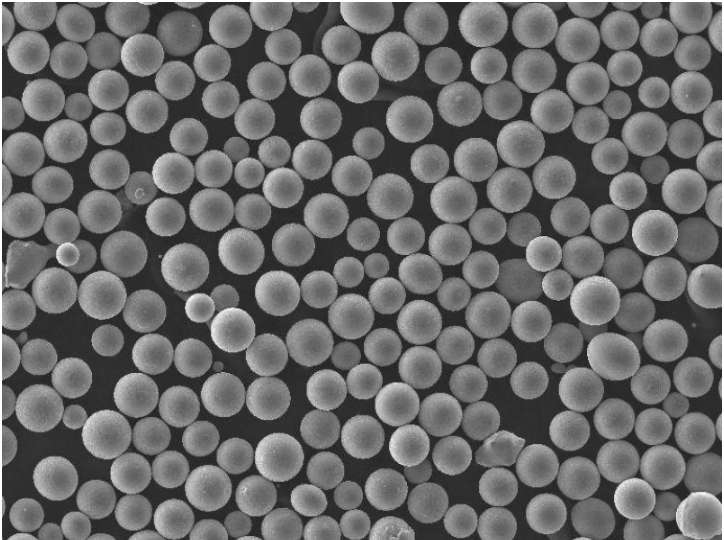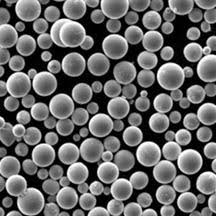
Best 17-4PH stainless steel powder for 3D Printing
Overview of 17-4PH Stainless Steel Powder for 3D Printing 17-4PH is a precipitation hardening stainless steel powder widely used for additive manufacturing of high-strength, corrosion-resistant components across aerospace, medical, automotive, and general engineering applications. This article provides a detailed guide to 17-4PH powder for 3D printing. It covers composition, properties, print parameters, applications, specifications, suppliers,…
Pequeno MOQ
Fornecimento flexível para centenas de produtos
Suporte à personalização
Pó personalizado de acordo com a indústria
Expedição rápida
Por DHL Express, seguro e rápido diretamente para as suas mãos
Overview of 17-4PH Stainless Steel Powder for 3D Printing
17-4PH is a precipitation hardening stainless steel powder widely used for additive manufacturing of high-strength, corrosion-resistant components across aerospace, medical, automotive, and general engineering applications.
This article provides a detailed guide to 17-4PH powder for 3D printing. It covers composition, properties, print parameters, applications, specifications, suppliers, handling, inspection, comparisons, pros and cons, and FAQs. Key information is presented in easy-to-reference tables.
Composition of 17-4PH Powder
17-4PH is a chromium-copper precipitation hardening stainless steel with a composition of:
| Elemento | Peso % | Propósito |
|---|---|---|
| Ferro | Equilíbrio | Elemento da matriz principal |
| Crómio | 15 – 17.5 | Resistência à oxidação |
| Cobre | 3 – 5 | Enrijecimento por precipitação |
| Níquel | 3 – 5 | Austenite stabilizer |
| Nióbio | 0.15 – 0.45 | Formador de metal duro |
| Manganês | 1 máximo | Desoxidante |
| Silício | 1 máximo | Desoxidante |
| Carbono | 0.07 max | Strengthener and carbide former |
The copper provides precipitation hardening while chromium imparts corrosion resistance.
Properties of 17-4PH Powder
17-4PH possesses a versatile combination of properties:
| Propriedade | Descrição |
|---|---|
| alta resistência | Tensile strength up to 1310 MPa in aged condition |
| Dureza | Up to 40 HRC when aged |
| Resistência à corrosão | Comparable to 316L stainless in many environments |
| Tenacidade | Superior to martensitic stainless steels |
| Resistência ao desgaste | Better than 300 series stainless steels |
| Estabilidade a altas temperaturas | Strength maintained up to 300¡«C |
The properties make it suitable for diverse applications, from plastic mold tooling to aerospace components.

3D Printing Parameters for 17-4PH Powder
Typical parameters for printing 17-4PH include:
| Parâmetros | Valor típico | Propósito |
|---|---|---|
| Altura da camada | 20-100 Ã×m | Balance speed and resolution |
| Potência laser | 150-400 W | Fusão suficiente sem evaporação |
| Velocidade de digitalização | 400-1000 mm/s | Productivity vs density |
| Espaçamento da escotilha | 100-200 Ã×m | Density and properties |
| Support structure | Mínimo | Easy removal |
| Prensagem isostática a quente | 1120¡«C, 100 MPa, 3h | Eliminar a porosidade |
Parameters are optimized for properties, time, and post-processing requirements.
Applications of 3D Printed 17-4PH Parts
Additively manufactured 17-4PH components are used in:
| Indústria | APLICAÇÕES |
|---|---|
| Aeroespacial | Structural brackets, fixtures, actuators |
| Médico | Dental implants, surgical instruments |
| Automotivo | High strength fasteners, gears |
| Consumidor | Watch cases, sporting equipment |
| Industrial | End-use metal tooling, jigs, fixtures |
Benefits of AM include complex geometries, customization, reduced lead time and machining.
Specifications of 17-4PH Powder for 3D Printing
17-4PH powder must meet strict specifications:
| Parâmetros | Especificação |
|---|---|
| Faixa granulométrica | 15-45 Ã×m típico |
| Forma da partícula | Morfologia esférica |
| Densidade Aparente | > 4 g/cc |
| Densidade Batida | > 6 g/cc |
| Taxa de fluxo por corredor | > 23 seg. para 50 g |
| Pureza | >99,9% |
| Teor de Oxigênio | <100 ppm |
Estão disponíveis distribuições de tamanho personalizadas e níveis de humidade controlados.
Fornecedores de 17-4PH em pó
Reputable suppliers include:
| Fornecedor | Local |
|---|---|
| Tecnologia LPW | Reino Unido |
| Sandvik Osprey | Reino Unido |
| Carpenter Additive | EUA |
| Praxair | EUA |
| Erasteel | Suécia |
| AMETEK | EUA |
Prices range from $50/kg to $120/kg based on purity, size, and order quantity.
Handling and Storage of 17-4PH Powder
As a reactive material, 17-4PH powder requires controlled handling:
- Store in cool, dry, inert environments away from moisture
- Prevent oxidation and contamination during handling
- Use conductive containers grounded to prevent static buildup
- Evitar a acumulação de poeiras para minimizar o risco de explosão
- Recomenda-se a ventilação por exaustão local
- Wear PPE and avoid inhalation
Careful storage and handling ensures optimal powder condition.
Inspection and Testing of 17-4PH Powder
Os métodos de teste de qualidade incluem:
| Método | Parameters Checked |
|---|---|
| Análise granulométrica | Distribuição de Tamanho de Partículas |
| Imagem SEM | Morfologia das partículas |
| EDX | Química e composição |
| XRD | Fases presentes |
| Picnometria | Densidade |
| Taxa de fluxo por corredor | Fluidez do pó |
Os ensaios efectuados de acordo com as normas ASTM verificam a qualidade do pó e a consistência dos lotes.
Comparing 17-4PH to Alternative Powders
17-4PH compares to other alloys as:
| Liga | Força | Resistência à corrosão | Custo | Soldabilidade |
|---|---|---|---|---|
| 17-4PH | Excelente | Bom | Médio | Justo |
| 316L | Médio | Excelente | Médio | Excelente |
| IN718 | Bom | Bom | Alto | Justo |
| CoCr | Médio | Justo | Médio | Excelente |
With balanced properties, 17-4PH provides the best combination of strength, corrosion resistance, and cost for many applications.
Pros and Cons of 17-4PH Powder for 3D Printing
| **Prós** | Contras |
|---|---|
| Alta relação resistência-peso | Lower oxidation resistance than austenitic stainless steels |
| Good combination of strength and corrosion resistance | Required post-processing like HIP and heat treatment |
| Lower cost than exotic alloys | Controlled atmosphere storage needed |
| Established credentials in AM | Difícil de soldar e maquinar |
| Comparable properties to wrought material | Susceptible to pitting and crevice corrosion |
17-4PH enables high-performance printed parts across industries, though not suited for extreme environments.
Frequently Asked Questions about 17-4PH Powder for 3D Printing
Q: What particle size range works best for printing 17-4PH alloy?
A: A range of 15-45 microns provides optimal powder flow while enabling high resolution and density in the printed parts.
Q: What post-processing is required after printing with 17-4PH?
A: Hot isostatic pressing and heat treatment are usually necessary to eliminate internal voids, relieve stresses, and achieve optimal properties.
Q: What material is 17-4PH most comparable to for AM applications?
A: It is closest to 316L in corrosion resistance but much stronger. 17-4PH provides the best overall combination for many high-strength applications above 300 series stainless.
Q: Does 17-4PH require supports when 3D printing?
A: Minimal supports are recommended on overhangs and complex inner channels to prevent deformation during printing and allow easy removal.
Q: What industries use additively manufactured 17-4PH components?
A: Aerospace, medical, automotive, industrial tooling, and consumer products are the major application areas benefitting from 3D printed 17-4PH parts.
Q: What accuracy and finish is achievable with 17-4PH AM parts?
A: After post-processing, 17-4PH printed components can achieve dimensional tolerances and surface finish comparable to CNC machined parts.
Q: What density can be expected with optimized 17-4PH prints?
A: Densities exceeding 99% are routinely achieved with 17-4PH using ideal parameters tailored for the alloy, matching wrought properties.
Q: Is 17-4PH compatible with powder bed fusion processes?
A: Yes, it can be processed using selective laser melting (SLM), direct metal laser sintering (DMLS), and electron beam melting (EBM).
Q: What defects can occur when printing 17-4PH components?
A: Potential defects are cracking, distortion, porosity, incomplete fusion, and surface roughness. They can be minimized through optimized print parameters.
Q: Can support structures be removed easily from 17-4PH printed parts?
A: Properly designed minimal supports are easy to detach given the excellent mechanical properties of the alloy in the aged condition.
Contactar-nos agora
Contacte-nos para obter cotações de produtos recentes e disponibilidade de stock.
